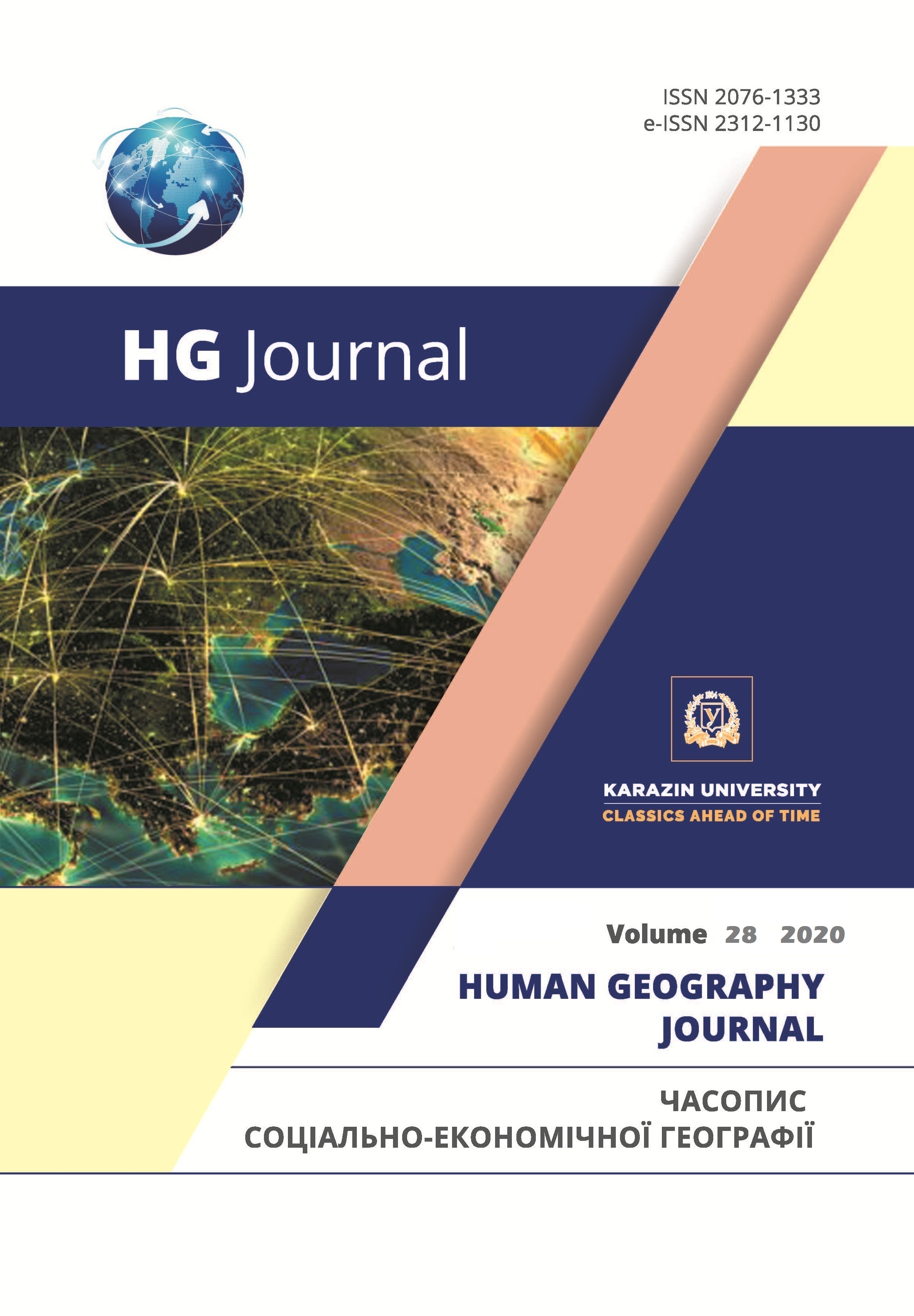Optimization of the network of general secondary education institutions in the conditions of decentralization: geographical aspect
Abstract
Decentralization reform includes a number of other reforms, including education reform, which is one of the most important. The main results of the reform of secondary education are: the introduction of the New Ukrainian School, the change of the system of management and financing of institutions, as well as the creation of educational districts and basic schools. Optimization of the network of general secondary education institutions (GSEI) is an important element on the way to quality educational services.
When optimizing the network of GSEI, it is necessary to take into account a number of factors, among which the most important are: quality of transport routes, distance of transportation of students, number of students who will need transportation, material and technical base of institutions (availability of computer classes, gym and classrooms), staffing of the library fund, the quality of teaching staff and others.
As of September,1 2019 there were 402 educational establishments with 105483 students in Chernivtsi oblast. Currently, 14 basic educational institutions and 22 branches have been established in Chernivtsi oblast. Among the raions, the largest number of basic educational institutions have been established in Hertsa raion. No basic educational institutions have been established in Putyla and Hlyboka raions, as well as in the city of Chernivtsi. A total of 7,354 students study in basic institutions and their branches.
To test the method of optimization of the network of GSEI, we chose Kitsman raion of Chernivtsi oblast, which is optimal for the oblast and Ukraine in general on various indicators: demographic characteristics; the size of the raion; features of the transport network; the number of GSEI and students enrolled in them and others.
Currently, there are 2 basic institutions and 2 branches in Kitsman raion. After analyzing a number of indicators (level of institutions, peculiarities of the institution location, number of students who will need transportation, area of student premises, material and technical base, staffing of the library fund, qualification of pedagogical staff and quality of graduates’ knowledge), we propose to optimize Kitsman raion network of GSEI, by means of establishing of 12 educational districts, 11 basic institutions and 26 branches. In most educational districts of Kitsman raion we propose to create one basic institution, only in Kitsman educational district – two, and in Shypyntsi and Luzhany educational districts not to create any basic institution at the moment.
Downloads
References
Topuzov, O.M. (Eds.). (2018). Anotovani rezultaty naukovo-doslidnoi roboty Instytutu pedagogiky NAPN Ukrainy za 2018 rik [Annotated results of research work of the Institute of Pedagogy of the National Academy of Pedagogical Sciences of Ukraine for 2018]. Kyiv: Pedagogichna dumka [in Ukrainian].
Benovska, L.Ya. (2016). Formuvannya opornykh shkil v umovakh reformuvannya mistsevoho samovryaduvannya [Formation of support schools in the conditions of local self-government reform]. Sotsialno-ekonomichni problemy suchasnoho periodu Ukrainy, 2, 32-37 [in Ukrainian].
Virchenko, P. (2009). Osoblyvosti prostorovoi organizatsii struktury regionalnoi systemy osvity [Features of the spatial organization of the structure of the regional education system]. Chasopys sotsialno-ekonomichnoi geografii – Human Geography Journal, 7(2), 178-182 [in Ukrainian].
Zaiachuk, O.H. (2009). Terytorialna organizatsiya zahalnoosvitnikh zakladiv Chernivetskoi oblasti [Territorial organi-zation of secondary schools of Chernivtsi region]. Naukovyi visnyk Volynskoho natsionalnoho universytetu im. Lesi Ukrainky. Seriya: Geografichni nauky, 116-120 [in Ukrainian].
Tsentr yakosti osvity (2020). Zvity i statystychni dani [Reports and statistics]. Retrieved from http://centr.cv.ua/?cat=7 [in Ukrainian].
Derzhavna kaznacheyska sluzhba Ukrainy (2020). Obyednani terytorialni hromady [United territorial communities]. Retrieved from https://www.treasury.gov.ua/ua/kaznachejstvo-informuye/obyednani-teritorialni-gromadi [in Ukrainian].
Ministerstvo osvity i nauky Ukrainy (2019). Oporni shkoly [Support schools]. Retrieved from https://mon.gov.ua/ua/osvita/zagalna-serednya-osvita/oporni-shkoli [in Ukrainian].
Pashkevych, M.S., & Kharchenko, M.O. (2016). Naukovi zasady formuvannya merezhi opornykh shkil u regionakh Ukrainy [Scientificbases of formation of a network of basic schools in the regions of Ukraine]. Dnipropetrovsk: NHU [in Ukrainian].
Kabinet ministriv Ukrainy (2019). Postanova Pro zatverdzhennya Polozhennya pro osvitni okruh i opornyi zaklad osvity [Resolution on approval of the Regulations on the educational district and the basic educational institution]. Retrieved from https://www.kmu.gov.ua/npas/pro-zatverdzhennya-polozhennya-pro-osvitnij-okrug-i-opornij-zaklad-osvit-m-190619 [in Ukrainian].
Ministerstvo okhorony zdorovya Ukrainy (2018). Sanitarnyi rehlament dlya zakladiv zahalnoi serednyoi osvity [Sani-tary regulations for general secondary education institutions]. Retrieved from https://moz.gov.ua/uploads/1/6845-pro_20180828_1.pdf [in Ukrainian].
Stetskyi, V.V. (1998). Osvitniy kompleks Lvivskoi oblasti: sotsialno-ekonomiko-geografichni doslidzhennya [Educa-tional complex of Lviv region: socio-economic-geographical research]. Lviv: LONMIO [in Ukrainian].
Flinta, N.I. (2005). Kulturno-osvitniy kompleks regionu i yoho terytorialna organizatsiya (na materialakh Ter-nopilskoi oblasti) [Cultural and educational complex of the region and its territorial organization (based on materials from Ternopil region)]. Kyiv [in Ukrainian].
Copyright (c) 2020 © Bilous J.

This work is licensed under a Creative Commons Attribution 4.0 International License.




